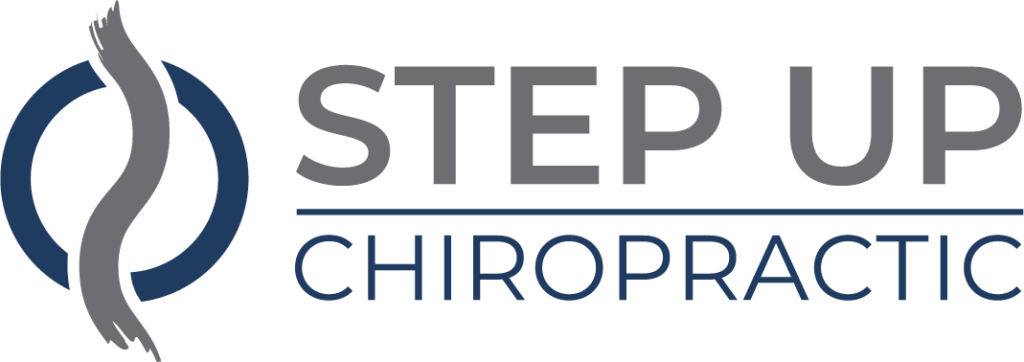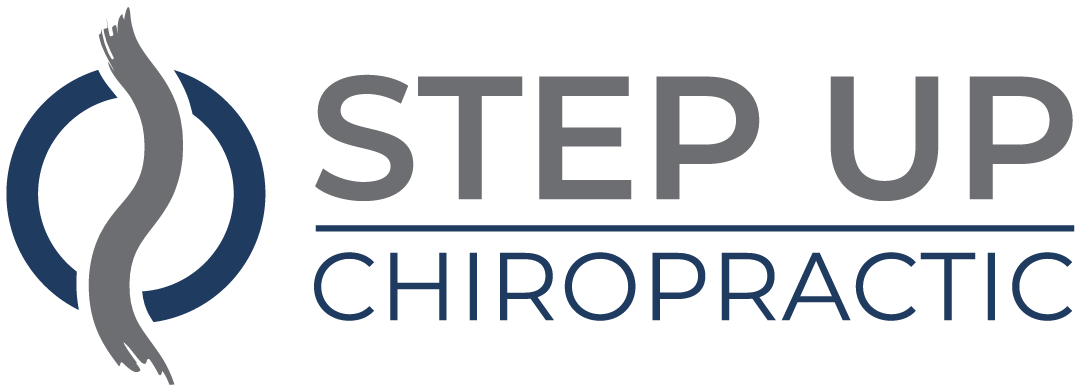If you're looking to enhance your athletic performance, you might want to reflect on how manual therapy can play a vital role in your training regimen. By incorporating hands-on techniques, you can improve flexibility and speed up recovery, which can directly influence your performance on the field or court. You may find that regular sessions help not just physically, but also mentally, allowing for sharper focus during competitions. However, understanding the specific benefits and techniques of manual therapy is essential for maximizing its effectiveness—let's explore what you need to know.
Understanding Manual Therapy
Manual therapy encompasses a variety of hands-on techniques designed to relieve pain, improve mobility, and enhance overall athletic performance. You might be familiar with techniques like massage, joint mobilization, and soft tissue manipulation, all of which can play an essential role in your training regimen. These methods focus on the body's musculoskeletal system, targeting specific areas where tension or injury may occur.
When you engage in manual therapy, a skilled practitioner applies pressure, stretches, and manipulates your muscles and joints. This not only helps to alleviate discomfort but also aids in restoring proper function. If you've been feeling stiff or tight, these techniques can help you regain your range of motion, making it easier to perform at your best.
Moreover, understanding the principles behind manual therapy can empower you to recognize its benefits. It's important to know that the goal isn't just immediate relief; it's about creating long-lasting improvements in your movement patterns and overall biomechanics.
You'll likely find that incorporating manual therapy into your routine can lead to a more balanced and resilient body.
Lastly, communication with your therapist is key. You should feel comfortable discussing any pain or discomfort you experience during treatment. This collaboration guarantees that the manual therapy techniques are tailored to your specific needs, ultimately helping you to maximize your athletic potential and enjoy your activities more fully.
Benefits for Athletes
As an athlete, you know how essential it's to maintain peak performance.
Manual therapy can enhance your flexibility and mobility, reduce muscle tension, and even help prevent injuries.
Enhanced Flexibility and Mobility
Enhanced flexibility and mobility are essential components of an athlete's performance. When you improve these aspects, you reveal your full potential on the field or court.
Manual therapy can play a significant role in enhancing your flexibility and mobility, allowing you to move more freely and efficiently. Here are four key benefits you can experience:
- Improved Range of Motion: Greater flexibility allows your joints to move through their full range, which can enhance your overall athletic performance.
- Injury Prevention: Increased mobility helps reduce the risk of injuries by ensuring your muscles and joints can handle the demands of your sport.
- Enhanced Performance: With better flexibility, you can execute movements with more power and precision, leading to improved performance in your specific sport.
- Faster Recovery: Manual therapy techniques can help increase blood flow and promote recovery, so you can get back to training or competing sooner.
Reduced Muscle Tension
Achieving ideal athletic performance involves not just flexibility and mobility, but also managing muscle tension. When your muscles are overly tight, they can limit your range of motion and hinder your performance. By reducing muscle tension, you'll enhance your overall athletic capabilities.
Manual therapy techniques, like massage or myofascial release, help you achieve this reduction. These methods target specific muscle groups, relieving tightness and promoting relaxation. As a result, you'll feel more at ease during your workouts and competitions. When your muscles aren't fighting against you, you can focus more on your technique and strategy.
Additionally, decreased muscle tension can improve your recovery time. After intense training sessions, your body needs to bounce back. By incorporating manual therapy into your routine, you can speed up that recovery, allowing you to train harder and more consistently.
Ultimately, managing muscle tension not only enhances your performance but also contributes to your overall well-being. You'll find that with less tension, you're more energetic and motivated to push your limits.
Embrace manual therapy as a key component of your training regimen, and watch your athletic performance soar.
Injury Prevention Strategies
While training hard is essential for athletes, it's equally important to incorporate effective injury prevention strategies. You can enhance your performance and longevity in the sport by implementing these practices.
Here are four key strategies to take into account:
- Dynamic Warm-Up: Start each training session with a proper warm-up. This increases blood flow to your muscles and prepares your body for intense activity, reducing the risk of strains.
- Strength Training: Incorporate strength training into your routine. Building muscle strength helps stabilize your joints, which can prevent injuries during your sport.
- Flexibility Work: Don't neglect flexibility! Regular stretching or yoga can improve your range of motion and decrease muscle tension, making your body more resilient to injuries.
- Rest and Recovery: Allow your body time to recover. Overtraining can lead to fatigue and increase your injury risk, so make sure you're getting adequate rest and sleep.
Key Techniques Explained
In this section, you'll discover essential manual therapy techniques that can enhance your athletic performance.
Soft tissue mobilization, joint manipulation, and myofascial release all play crucial roles in improving your flexibility, reducing pain, and speeding up recovery.
Let's break down how each technique works and the benefits they offer.
Soft Tissue Mobilization
Soft tissue mobilization (STM) plays an essential role in enhancing athletic performance by targeting the body's connective tissues.
This technique focuses on releasing tension and improving blood flow, which can lead to better flexibility, reduced soreness, and faster recovery. You can implement various STM techniques to optimize your training and performance.
Here are four key methods:
- Myofascial Release: This technique involves applying gentle sustained pressure to the fascia, helping to release restrictions and improve movement patterns.
- Trigger Point Therapy: By identifying and applying pressure to specific "trigger points" in your muscles, you can alleviate pain and restore normal function.
- Deep Tissue Massage: This method targets deeper layers of muscle and connective tissue, effectively breaking down knots and enhancing circulation.
- Active Release Technique (ART): This technique combines movement and pressure to treat soft tissue injuries, focusing on muscle, fascia, and nerve entrapments.
Incorporating these STM techniques into your routine can considerably impact your athletic performance, leading to improved mobility, reduced injury risk, and enhanced recovery.
Give them a try and feel the difference!
Joint Manipulation Techniques
Building on the benefits of soft tissue mobilization, joint manipulation techniques offer another layer of support for enhancing athletic performance. These techniques focus on the movement and alignment of your joints, helping to improve your range of motion and reduce discomfort.
One popular method is the high-velocity, low-amplitude (HVLA) thrust, which involves a quick, precise adjustment to restore joint function. You may experience an immediate sense of relief and improved mobility following this technique.
Another common approach is joint mobilization, characterized by slow, oscillatory movements that enhance flexibility and lessen stiffness. This can be particularly beneficial if you're dealing with chronic joint tightness.
You might also encounter positional release techniques, where you're placed in a position that reduces tension on a specific joint, allowing for better alignment and function. Each of these methods aims to restore ideal joint mechanics, which is essential for peak performance in your sport.
Incorporating joint manipulation techniques into your training regimen can lead to significant improvements in both your physical capabilities and overall well-being, setting you up for success in your athletic endeavors.
Myofascial Release Benefits
Myofascial release is a powerful technique that targets the fascia, the connective tissue surrounding muscles and joints, to alleviate pain and improve mobility.
By applying sustained pressure and stretching, you can effectively release tension and promote better movement patterns. Here are some key benefits of myofascial release:
- Pain Relief: This technique can considerably reduce chronic pain by breaking down tight knots in the fascia, helping you feel more comfortable during activities.
- Enhanced Flexibility: Myofascial release allows for improved range of motion, making it easier for you to perform athletic movements and exercises.
- Improved Circulation: By releasing tension in your fascia, blood flow increases, delivering more oxygen and nutrients to your muscles, which aids in recovery.
- Stress Reduction: The gentle pressure and stretching promote relaxation, helping you to manage stress and anxiety, which can enhance your overall performance.
Incorporating myofascial release into your routine can yield considerable benefits.
Whether you're a seasoned athlete or just starting out, it can help you perform at your best.
Enhancing Recovery Times
Recovery times are important for athletes aiming to maintain peak performance. When you push your body to its limits, adequate recovery becomes critical to avoid injuries and guarantee you're ready for the next challenge. Manual therapy can greatly enhance your recovery process, allowing you to bounce back faster and more effectively.
One of the primary benefits of manual therapy is its ability to improve blood circulation. Increased blood flow delivers important nutrients to your muscles, helping to repair tissue damage and reduce soreness. You'll also notice a decrease in inflammation, which can hinder your performance if left unchecked. By incorporating manual therapy into your routine, you're not just recovering quicker; you're laying the groundwork for future success.
Another key aspect is the reduction of muscle tension and stiffness. Manual techniques like deep tissue massage and myofascial release target tight areas, promoting relaxation and flexibility. This means you'll feel more limber and less restricted during your next training session or competition.
Furthermore, mental recovery is just as important. Manual therapy provides a calming effect that can alleviate stress and anxiety. By taking time to focus on your body, you're also giving your mind the chance to unwind, which is crucial for overall performance.
Incorporating manual therapy into your recovery routine isn't just beneficial; it's important for athletes who want to optimize their performance and longevity in their sport. Embrace it, and watch as your recovery times improve, leading to better results on the field or court.
Integrating Manual Therapy
Integrating manual therapy into your training regimen can elevate your performance and enhance your overall well-being. By making this practice a regular part of your routine, you can reveal a variety of benefits that support your athletic goals.
Here's how to effectively incorporate manual therapy:
- Schedule Sessions Regularly: Plan your manual therapy sessions around your training schedule. Aim for at least once every few weeks, or more frequently during intense training periods. Consistency is key to maximizing benefits.
- Combine with Other Recovery Techniques: Use manual therapy alongside other recovery strategies, like stretching, hydration, and proper nutrition. This holistic approach guarantees your body gets the support it needs to recover fully and perform at its best.
- Communicate with Your Therapist: During your sessions, share your training goals, areas of discomfort, and any specific performance issues you're facing. This communication helps tailor the therapy to your needs, making it more effective.
- Listen to Your Body: Pay attention to how your body responds to manual therapy. If you notice improvements in mobility, pain relief, or reduced muscle tightness, it's a sign that you're on the right track.
Don't hesitate to adjust the frequency or type of therapy based on your body's feedback.
Choosing a Qualified Therapist
When selecting a qualified therapist for manual therapy, it's essential to evaluate their credentials and experience. Start by confirming their educational background. Look for therapists with degrees in relevant fields, such as physical therapy, athletic training, or chiropractic care. This foundational knowledge guarantees they understand human anatomy and biomechanics.
Next, consider their specialization. Some therapists focus on sports injuries, while others may emphasize rehabilitation or pain management. Choose someone whose expertise aligns with your specific needs as an athlete. You want a therapist who understands the demands of your sport and can tailor their approach accordingly.
Don't forget to check for certifications. Many therapists pursue additional qualifications in manual therapy techniques, such as myofascial release or deep tissue massage. These certifications indicate a commitment to ongoing education and mastery of advanced skills.
It's also helpful to seek recommendations from fellow athletes or coaches. Personal referrals can provide insight into a therapist's effectiveness and approach.
Once you've narrowed down your options, schedule an initial consultation. This meeting will help you gauge their communication style, professionalism, and overall approach to treatment.
Lastly, trust your instincts. A strong therapist-client relationship is fundamental for effective treatment. You should feel comfortable discussing your concerns and confident in their ability to help you reach your athletic goals.
Conclusion
Incorporating manual therapy into your training routine can greatly boost your athletic performance. By enhancing flexibility, mobility, and recovery, you'll be better equipped to tackle your sport's demands. Regular sessions with a qualified therapist not only prevent injuries but also support your mental focus, helping you stay on track with your goals. Don't underestimate the power of hands-on techniques—make manual therapy a essential part of your journey to peak performance!




